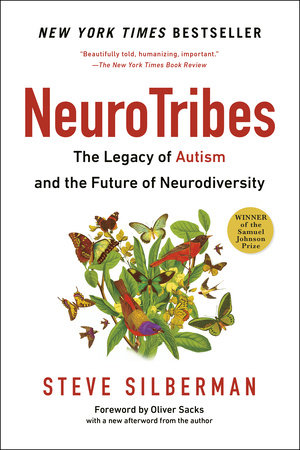It is estimated that approximately 3 to 5 percent of the population has some form of synesthesia and that women are more likely to become synesthetes than men.
YOU MIGHT ALSO LIKE
CLEAR ALL
BY TOPIC
BY TEACHER
BY TYPE
FILTER

TOPIC
- Relationship Challenges (27)
- Child’s ADD/ADHD (21)
- Communication Skills (21)
- Learning Styles (21)
- Self-Discovery (21)
- Parenting (20)
- Romantic Relationships (19)
- Synesthesia (19)
- Belonging (18)
- Children’s Well-Being (16)
- Young Adult Well-Being (15)
- Connection (13)
- Friendship (13)
- Highly Sensitive People (13)
- Imagination and Creativity (12)
- Self-Development (12)
- Family Dynamics (11)
- Anxiety (10)
- Cognitive Psychology (10)
- Emotional and Mental Health (10)
- Growth Mindset (10)
- Neuroscience (10)
- Relationship with Time (10)
- Social Presence (8)
- BIPOC Well-Being (7)
- Identity Shifts (7)
- LGBTQIA Well-Being (7)
- Marriage (7)
- Racial Identity (7)
- Self-Reliance (7)
- Access to Education (6)
- Collaboration (6)
- Social Anxiety (6)
- Work Challenges (6)
- Authenticity (5)
- Child’s Challenging Behavior (5)
- Creative Well-Being (5)
- Decision Making (5)
- Depression (5)
- Disabled Well-Being (5)
- Living as an Empath (5)
- Offering Support to Others (5)
- Philosophical Approaches (5)
- Self-Acceptance (5)
- Self-Actualization (5)
- Self-Esteem (5)
- Social Justice (5)
- Women’s Well-Being (5)
- Black Well-Being (4)
- Confidence (4)
- Cross-Cultural Dynamics (4)
- Latinx Well-Being (4)
- Memory (4)
- Neuropsychology (4)
- Problem Solving (4)
- Productivity (4)
- Acceptance (3)
- Activism/Service (3)
- Animal Connection (3)
- Caregiver Well-Being (3)
- Child’s Emotional Growth (3)
- Consciousness (3)
- Fiction (3)
- Focus (3)
- Habits of Mind (3)
- Immigration and Assimilation (3)
- Memoir (3)
- Perception (3)
- Psychology (3)
- Racism (3)
- Self-Realization (3)
- Work Relationships (3)
- AAPI Well-Being (2)
- Animal Communication (2)
- Burnout (2)
- Challenges with Teens (2)
- Criticism and Rejection (2)
- Discrimination (2)
- Emotional Intelligence (EQ) (2)
- Empathy (2)
- Family Acceptance (2)
- Female Friendship (2)
- Gender Identity (2)
- Human Potential (2)
- Inner Life (2)
- Intimacy (2)
- Leadership (2)
- LGBTQIA Sexuality (2)
- Manifestation (2)
- Mental Health Challenges (2)
- Motherhood (2)
- Negative Self-Talk (2)
- OCD (2)
- Oneness (2)
- Race and Gender (2)
- Racial Discrimination (2)
- Science and Spirituality (2)
- Search for Purpose (2)
- Self-Care (2)
- Self-Mastery (2)
- Self-Pressure (2)
- Self-Worth (2)
- Setting Limits and Boundaries (2)
- Shame (2)
- Social Psychology (2)
- Social Responsibility (2)
- Transgender Well-Being (2)
- Transitions (2)
- Visualization (2)
- Work Ethic (2)
- Academic Struggles (1)
- Adaptability (1)
- Addiction (1)
- Affirmations (1)
- Animal Welfare (1)
- Attachment Theory (1)
- Awareness (1)
- Body Image (1)
- Body Positivity (1)
- Brain Health (1)
- Buddhism (1)
- Cancer (1)
- Child’s Anxiety (1)
- Cognition (1)
- Coming Out (1)
- Community Healing (1)
- Compassion Fatigue (1)
- Death and Dying (1)
- Disconnection (1)
- Dysfunctional Childhood (1)
- Ecospirituality (1)
- Ego (1)
- Ego Dissolution (1)
- Empowerment (1)
- Endurance (1)
- Entrepreneurship (1)
- Facing Own Death (1)
- Fatherhood (1)
- Finding Meaning (1)
- Following Bliss (1)
- Gaming Addiction (1)
- Generational Healing (1)
- Genetics (1)
- Global Challenges (1)
- Handling a Child’s Illness (1)
- Healing Approaches (1)
- Homophobia (1)
- Inner Peace (1)
- Inner Strengths (1)
- Inspiration (1)
- Intention (1)
- Interdependence (1)
- Intergenerational Trauma (1)
- Intuition (1)
- Judaism (1)
- Letting Go (1)
- LGBTQIA Parents (1)
- Life Challenges (1)
- Love (1)
- Meditation (1)
- Men’s Well-Being (1)
- Mindfulness (1)
- Mindfulness Practices (1)
- Misophonia (1)
- Moral Philosophy (1)
- Motivation (1)
- Near-Death Experience (1)
- New Relationships (1)
- Panic Attacks (1)
- Performance Pressure (1)
- Personal Development (1)
- Positive Thinking (1)
- Post-Traumatic Growth (1)
- Presence (1)
- PTSD (1)
- Racial Justice (1)
- Raising Nonbinary Children (1)
- Resilience (1)
- Self-Control (1)
- Self-Discipline (1)
- Self-Expression (1)
- Self-Harm (1)
- Self-Reflection Practices (1)
- Sexual Assault or Abuse (1)
- Shared-Death Experience (1)
- Sleep Disorders (1)
- Speaking Your Truth (1)
- Spiritual Awakening (1)
- Spiritual Life (1)
- Tibetan Buddhism (1)
- Time Management (1)
- Trauma Healing (1)
- Wake-Up Calls (1)
- Work-Life Balance (1)




